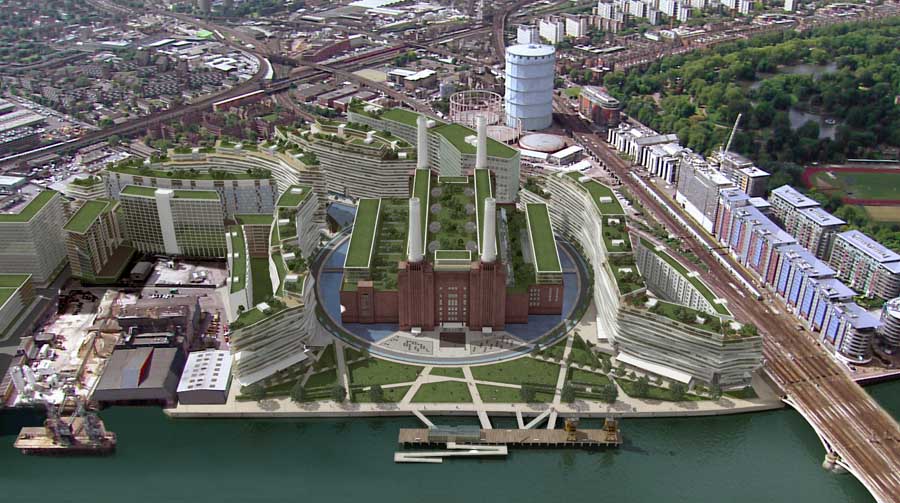 The financial credibility of the owners of the Battersea Power Station site, REO (Real Estate Opportunities) faces a strong test on the 31st of August when payments are due to both NAMA – the Irish toxic debt bank – and Lloyds Banking group. REO’s creditors have recently appointed Ernst & Young as insolvency advisers in advance of the 31st August deadline. Further details on the ‘debt D-day’ are available via the The Telegraph and Co Star Group.
The financial credibility of the owners of the Battersea Power Station site, REO (Real Estate Opportunities) faces a strong test on the 31st of August when payments are due to both NAMA – the Irish toxic debt bank – and Lloyds Banking group. REO’s creditors have recently appointed Ernst & Young as insolvency advisers in advance of the 31st August deadline. Further details on the ‘debt D-day’ are available via the The Telegraph and Co Star Group.
The Battersea site was bought in 2006 by REO, which is in majority owned by Irish group Treasury Holdings. This purchase occurred during the craziest period of the Irish property bubble. We can see remnants of the bubble in the current development proposal for the Power Station site. The plans bear all the hallmarks of the worst in speculative urban development that occurred during the bubble. However London has remained somewhat immune to the property bubble, and developers are happy to continue with business as usual and forget anything ever happened. This ‘developers dementia’ is of course good news for REO’s creditors NAMA who have been actively encouraged by some commentators to keep inflating a London property bubble.
Within all of this financial wheeling and dealing the real question is being ignored. That is not how long REO can sustain its current level of debt, but one of how long more the planning authorities in London will go on supporting the speculative urban development charade that inflates such bubbles.
The Battersea site is to be developed with a FAR (Floor Area Ratio) of roughly 5.0. This density is above average for London and well above an acceptable maximum density for a northern European city. Such densities sacrifice important basic human needs like daylight and turn open spaces and streets into canyon like wind tunnels. The only purpose such densities serve is to maximise short term profits for developers.
London’s planning authorities need to develop new thinking and approaches to the development of such iconic locations. Which have at their heart urban design that pays regard to human scale and the longer term societal, environmental and cultural needs of the city, rather than pandering to the demands of the demented developers.
Click Battersea Power Station for more blogs
See our Battersea Power Station project pages for more information and videos.
Or visit PlanA our general blog on urbanism, planning and architecture.
Spectacle homepage
Befriend Spectacle.Docs on Facebook
Follow SpectacleMedia on Twitter
